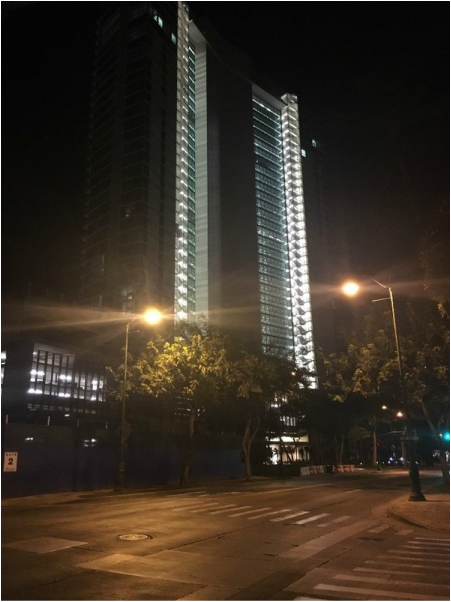|
A recent image of the Ritz Carlton in Waikiki With our ever expanding arsenal of technology, the choice of which type of lighting to use becomes increasingly difficult. This dilemma is apparent in the realm of artificial lighting where varying types of Light-Emitting Diode (LEDs) compete against each other in order to be installed throughout a given city. However, while some LEDs may be more energy efficient, they also pose threats that must be addressed, making many wonder if the slightly better energy efficiency is worth the associated negative side effects.
LED lights have existed for many years and over this time, have become much brighter and energy efficient. Typically, LEDs consist of “cooler” and “warmer” colors. Cooler LEDs are brighter, have a bluish color and have a higher kelvin (K) temperature that uses less energy. Warmer LEDs on the other hand are dimmer, have a reddish color and burn at a lower kelvin temperature which uses more energy. When a higher K temperature is used for LEDs, less energy is consumed to produce light compared with the same energy expenditure for the lower K temperature LEDs. While this may make the higher kelvin/bluish lights seem like the obvious choice when lighting a street or stairwell, it is important to first consider the negative side effects associated with these higher kelvin lights. When LEDs cast a more noticeable and intense bluish light, the viewer is receiving signals that tell the body to reduce the production of melatonin, which is directly responsible for the regulation of our circadian rhythm. In essence, this means that when exposed to high amounts of bluish light later in the evening and at night, living organisms will stay awake longer and negatively affect their body’s natural functions. Currently, we are seeing a large effort to reduce the amount of blue light that one receives at night, specifically with new electronic products that have a nighttime mode which make a screen’s colors “warmer” in order to try and have as little impact on the production of melatonin as possible. While this is a positive first step in reducing our nightly exposure to blue light, LED lights used to illuminate streets and buildings are lacking this capability and continue to have negative impacts on not only humans, but also many types of animals that rely heavily on their circadian rhythm in order to survive (specifically nocturnal animals). Secondly, these brighter LED lights have already begun to create controversy in urban areas such as Waikiki. The numerous stairwells and parking lots that are illuminated by these lights without any shielding or dimming capabilities, allows for a vast amount of light pollution to be created. The end result of this is the loss of our night sky, the stars associated with it, and large man-made structures that look as if they are lighthouses mistakenly placed in the middle of a city. Luckily things seem to be changing. A recent draft of the Waikiki Special District Design Guidelines has, for the first time, begun to address the issue of light pollution. These guidelines state that “use of dark sky friendly lighting is recommended for site and security lighting,” “uplighting should not be used to illuminate large expanses of buildings or entire facades,” and finally that “colored lighting does not change more than once in any 24-hour time period.” These guidelines begin to clearly identify the major issue of light pollution in Waikiki and how such an issue can be properly controlled overtime. Moving forward, in order to best minimize the negative impacts produced by light pollution, the use of lower kelvin/warmer lights should be advocated because a 3000K LED light produces half as much blue light as a 4000K LED, while only consuming a mere 6% more electricity. On top of this, by effectively managing light pollution sources (parking lots, street lights or stairwells) through such recommendations presented in the Waikiki Special District Design Guidelines, light pollution can be reduced in the Waikiki area. However, if switching to a lower kelvin LED is not an option, or developers do not wish to follow the newly proposed guidelines, the use of light shielding devices which only cast light upon a target area should be used. Additionally, the introduction of dimming features that rely on motion sensors, should be used in order to limit blue light exposure and the overall production of light pollution. By implementing these solutions over time, we should indeed begin to see a renaissance of Waikiki’s beautiful night sky and the benefits it provides for us all. Myles Ritchie Programs Director Comments are closed.
|
Welina!The Greenleaf is the online newsletter and blog of The Outdoor Circle. Here you will find updates on the projects and accomplishments of our many branches throughout the state, as well as programs with statewide impact. Archives
September 2023
Categories
All
|


 RSS Feed
RSS Feed